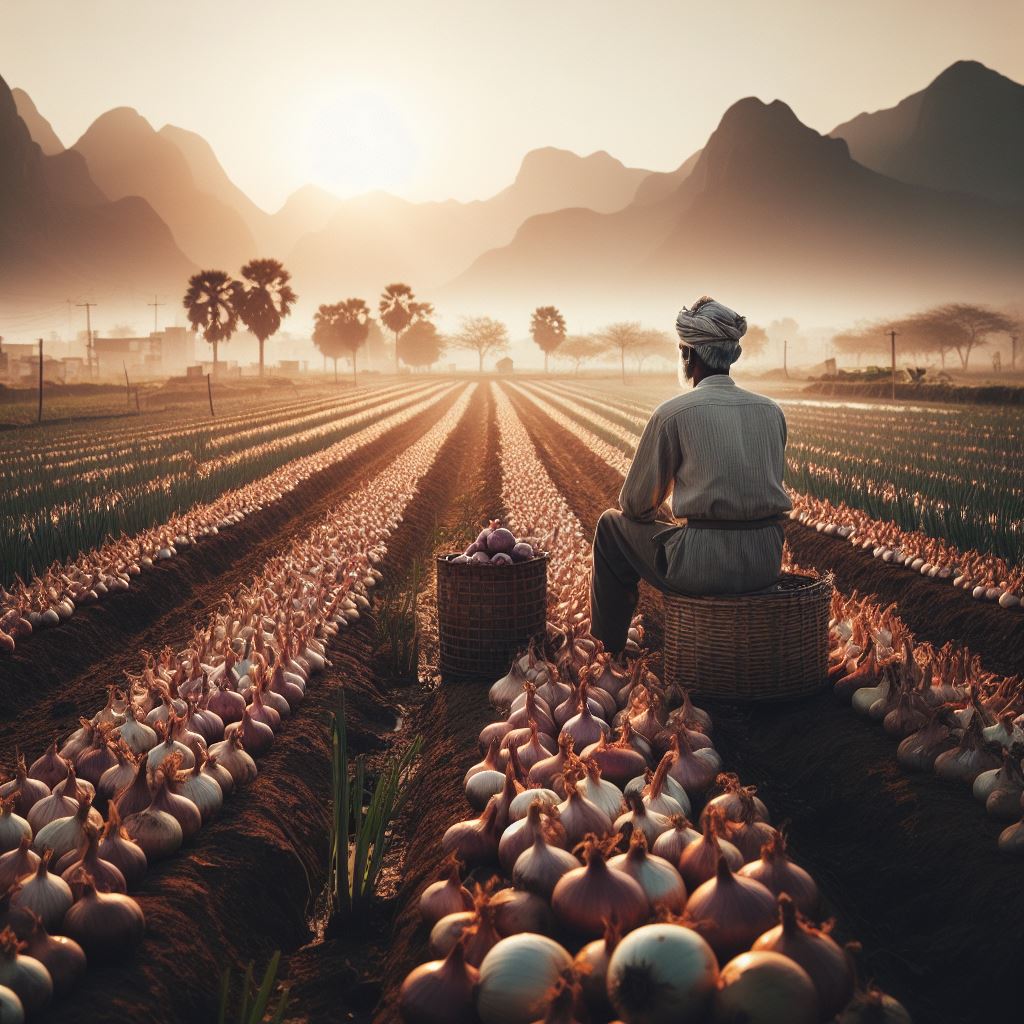Even though they are frequently relegated to the supporting role in culinary creations, onions play a crucial role in agriculture. From seed to succulent bulb, it requires careful preparation, committed maintenance, and a deep comprehension of its biological requirements. This thorough guide explores all the interesting facets of growing onions, including the best growing environments, planting techniques, routine maintenance, and the important harvest and storage procedures.
Climatic and Soil Factors: Alliums include onions, which are remarkably adaptable to a wide range of situations. Even though they are considered a cool-season crop, they are surprisingly tolerant of a wide variety of temperatures, growing best in areas with chilly to moderate temperatures (13–24°C). However, extreme heat or cold can prevent them from growing.
The best soil for growing onions has good drainage, which makes it easy for extra water to drain away. Good organic matter concentration in sandy loam or clay loam soils makes the ideal growing medium for onions. The ideal pH range for plants to absorb nutrients is between 5.8 and 6.5, which means that the pH needs to be kept slightly acidic.
Planting Techniques:
Direct seeding and transplanting seedlings are the two main planting techniques used by onion farmers. For short-day onion varieties, direct seeding is commonly used. It entails placing seeds at the proper depth and spacing straight into the prepared soil. This method requires careful timing because the best time to sow is during the chilly spring months. As an alternative, transplanting “sets,” or pre-grown seedlings, is a quicker and more controllable method, especially for long-day onion kinds.
Careful consideration is given to seed selection and appropriate spacing, regardless of the technique selected. Farmers carefully select cultivars that meet the needs of their particular market and climate. It is essential to leave enough space between rows and individual plants to promote proper root development, sunshine penetration, and air circulation.
Thorough weed control is crucial during the growth season. When it comes to essential resources like water, nutrients, and sunlight, weeds and onions compete. Frequent manual or automated weeding guarantees the onions have the resources they require to flourish.
A balanced fertilization schedule is essential for fostering bulb development and healthy growth. Fertilizers high in potassium, phosphorus, and nitrogen are commonly applied by farmers in order to meet the crop’s unique requirements during various phases of its growth cycle.
Maintaining the Crop:
Appropriate handling and management procedures are required from seed to harvest. Watering the soil on a regular basis is essential to keeping it moist but not drenched. When the weather is dry, onions are particularly susceptible to drought stress because to their shallow root systems. However, overwaterlogging can have unfavorable effects such as root rot.
Thorough weed control is crucial during the growth season. When it comes to essential resources like water, nutrients, and sunlight, weeds and onions compete. Frequent manual or automated weeding guarantees the onions have the resources they require to flourish.
Leading the Harvest:
Onion harvesting is a craft that calls for precise timing and handling methods. When the tops start to dry out and turn yellow, the bulbs are ready to be harvested when they reach their ideal size. For long-term storage, cautious lifting and curing—a regulated drying procedure—are essential. Curing an onion bulb extends its shelf life by allowing its outer layers to dry and harden, shielding the juicy within from deterioration.
Beyond the Fundamentals:
Although the above-mentioned fundamental ideas offer a basis for comprehension of onion growing, a number of other elements impact this dynamic agricultural endeavor.
Management of Pests and Diseases:
Similar to other crops, onions are vulnerable to a range of pests and illnesses. To safeguard the crop and reduce output losses, integrated pest management (IPM) strategies—which emphasize preventative measures and use ecologically friendly controls—must be put into practice.
Choice of Variety:
There is no shortage of kinds when it comes to onions; each has its own distinct qualities, such as color, flavor intensity, and storage capacity. For onion farming to be successful, choosing the appropriate type for certain market demands and climatic circumstances is essential.
Innovation and Technology:
The world of agriculture is always changing, and the cultivation of onions is no different. Farmers may now increase productivity and maximize harvests with new instruments and practices thanks to technological improvements. These consist of sophisticated soil testing techniques, automated planting and harvesting machinery, and precise irrigation systems.
In summary:
On the surface, growing onions seems like a straightforward task, but it’s actually a challenging and gratifying agricultural undertaking. Onion farming requires a deep understanding of plant growth, environmental considerations, and market dynamics, from carefully choosing seeds and preparing the soil to guaranteeing ideal growing circumstances, harvesting, and correct storage. Onion growers make a substantial contribution to the global food system by adopting sustainable practices, utilizing cutting-edge methods, and staying committed to the art of agriculture. This ensures that this adaptable culinary staple will continue to adorn kitchens across the globe.
Vist – FarmAmrit

